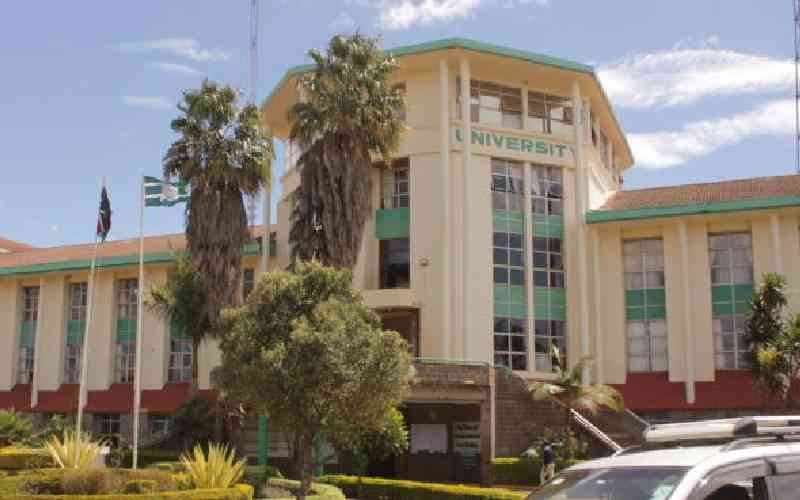Projects in public universities might grind to a halt as salaries and administrative expenses take the bulk of their revenues.
Treasury estimates on revenue and expenditure of state corporations in the last financial year indicate that a total of 21 universities and constituent colleges out of the 33 state universities are facing a cash crunch.
These include most of the universities newly chartered by retired President Mwai Kibaki in one of his last official functions in 2013.
Technical University of Kenya is at the top of the list, reporting a Sh218 million deficit over the 2015-2016 financial year.
The university generates Sh712 million from internal sources and receives another Sh1 billion from the national government. Of this, however, Sh1.6 billion is spent on salaries and wages and another Sh400 million on operating expenses.
Multimedia University of Kenya is also struggling to balance its books, reporting a Sh177 million deficit in the last financial year. The institution was a constituent college of Jomo Kenyatta University of Agriculture and Technology before receiving a charter in 2013.
Older and more established public universities also appear to be struggling to meet their operating costs, with Moi and Egerton posting huge budget deficits.
Egerton University recorded Sh5.3billion in recurrent revenue last year, made up of Sh2.7 billion from the Government and Sh2.5 billion from internal and other sources.
The university, reported to have 15,000 students in the 2015-2016 financial year, saw total operating expenses during the same period hit Sh5.5 billion, with Sh3.1 billion of this going to wages.
Masinde Muliro University of Science and Technology is currently facing a Sh26 million deficit in the 2015-2016 financial year, while Moi University must plug a Sh62 million hole for the same period.
Education Cabinet Secretary Fred Matiang'i last month commissioned an audit by the Commission for University Education on universities in the country. The audit, which was to be completed at the end of last month, is expected to cause ripples in the higher education sector if implemented in full.
The institutions, particularly the newly-chartered public universities, have been found lacking and face many challenges including poor infrastructure, inadequate teaching personnel and funding constraints.
The audit findings are expected to inform reforms in the higher education sector following radical changes to the primary and secondary education sectors last year.
 The Standard Group Plc is a
multi-media organization with investments in media platforms spanning newspaper
print operations, television, radio broadcasting, digital and online services. The
Standard Group is recognized as a leading multi-media house in Kenya with a key
influence in matters of national and international interest.
The Standard Group Plc is a
multi-media organization with investments in media platforms spanning newspaper
print operations, television, radio broadcasting, digital and online services. The
Standard Group is recognized as a leading multi-media house in Kenya with a key
influence in matters of national and international interest.
 The Standard Group Plc is a
multi-media organization with investments in media platforms spanning newspaper
print operations, television, radio broadcasting, digital and online services. The
Standard Group is recognized as a leading multi-media house in Kenya with a key
influence in matters of national and international interest.
The Standard Group Plc is a
multi-media organization with investments in media platforms spanning newspaper
print operations, television, radio broadcasting, digital and online services. The
Standard Group is recognized as a leading multi-media house in Kenya with a key
influence in matters of national and international interest.








